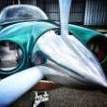This guy is an embarrassment to Mooney pilots.
-
Members Online
- Lincoln
- Rmfriday
- MusicCityMooney
- Greg Ellis
- 201Steve
- 201Mooniac
- Christian S
- 00-Negative
- ElkoRandy20J
- Cfidave
- 1980Mooney
- Crawfish
- BenP
- hazek
- vorlon1
- raymondscott0321
- Ethan
- eman1200
- GMBrown
- Yetti
- PT20J
- hubcap
- Marc_B
- Guillaume
- Tafara Gadze
- RACACH
- Schllc
- RobF
- TheAv8r
- N201MKTurbo
- PeterRus
- DanM20C
- TCC
- hypertech
- Scooter
- Justin Schmidt
- korbike
- 885EW


Recommended Posts
Join the conversation
You can post now and register later. If you have an account, sign in now to post with your account.